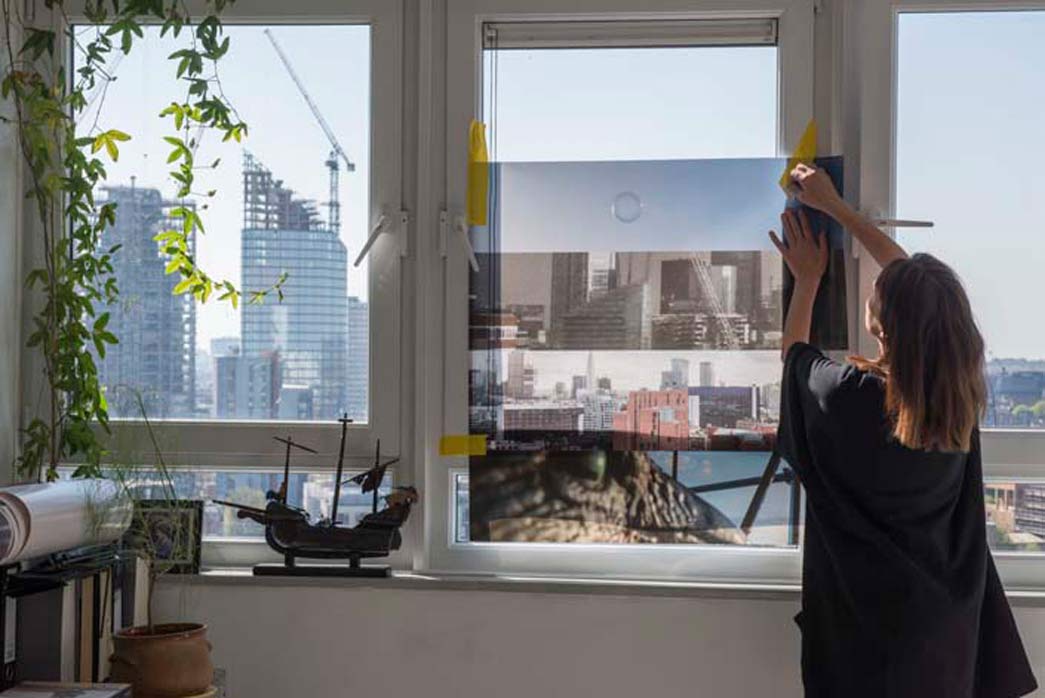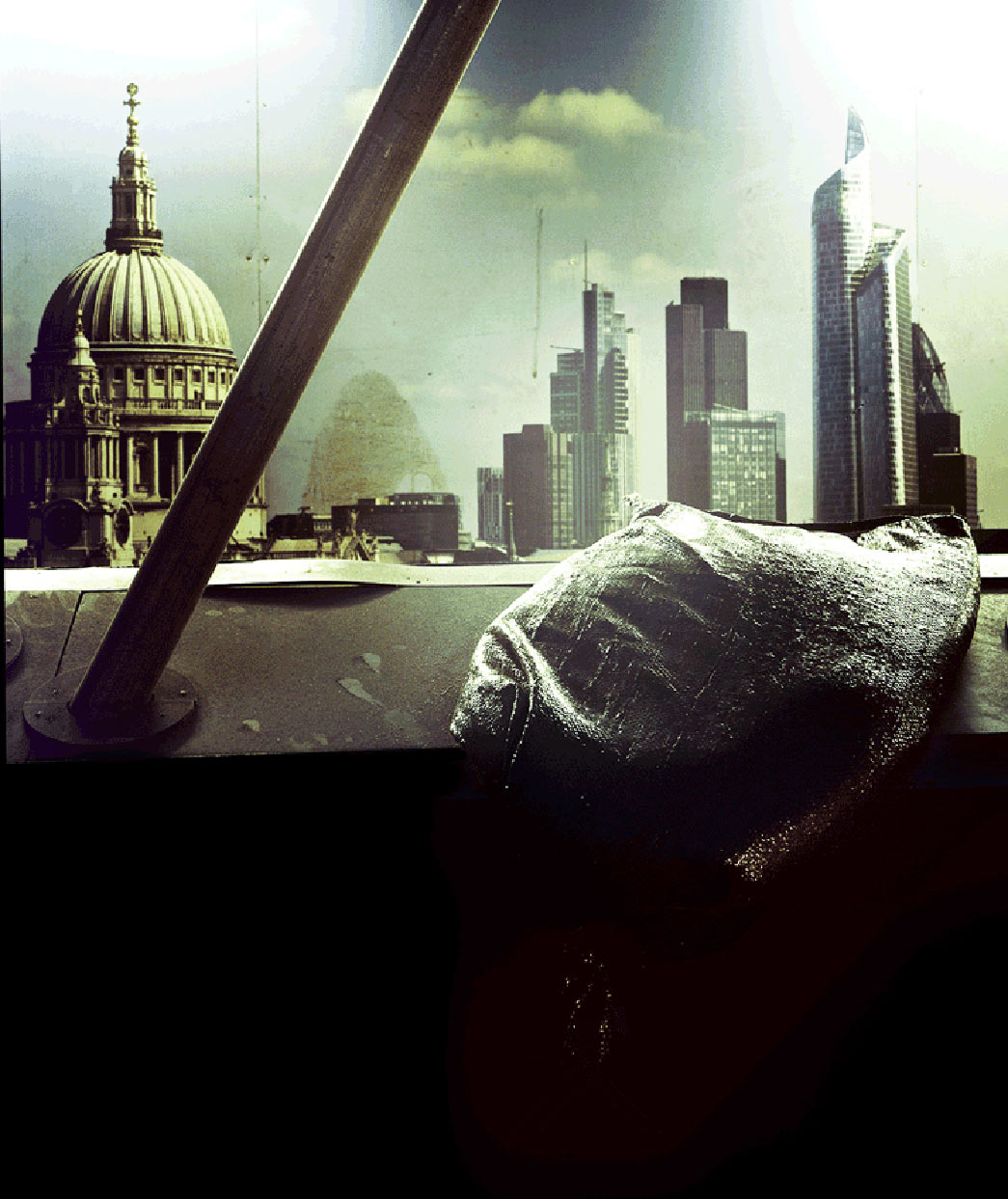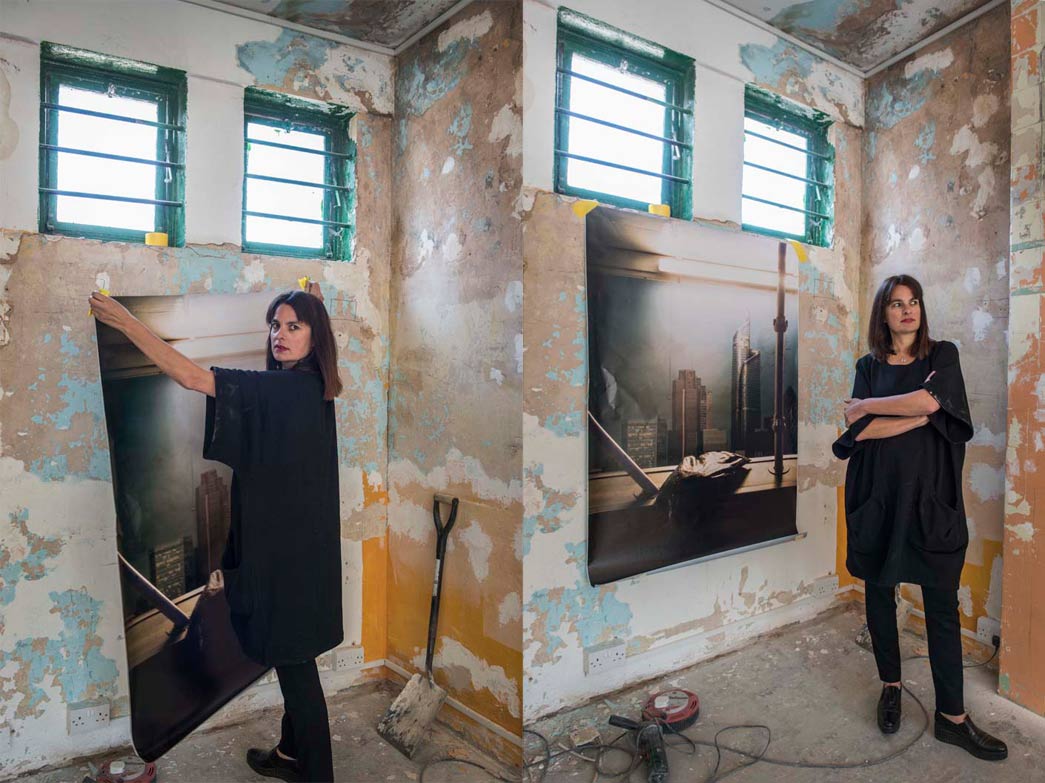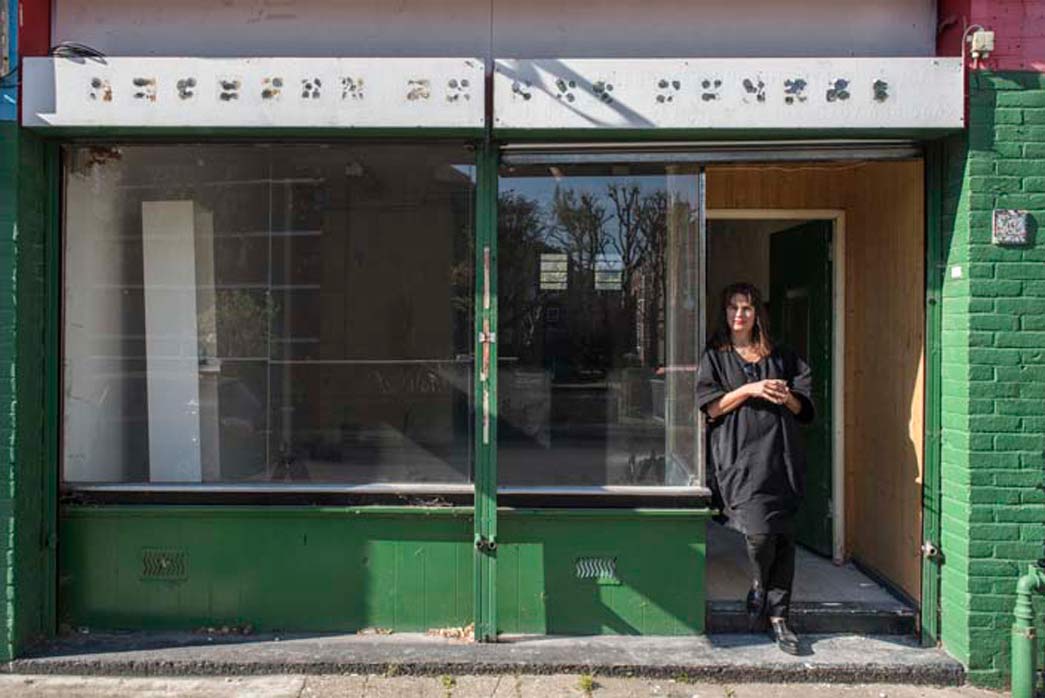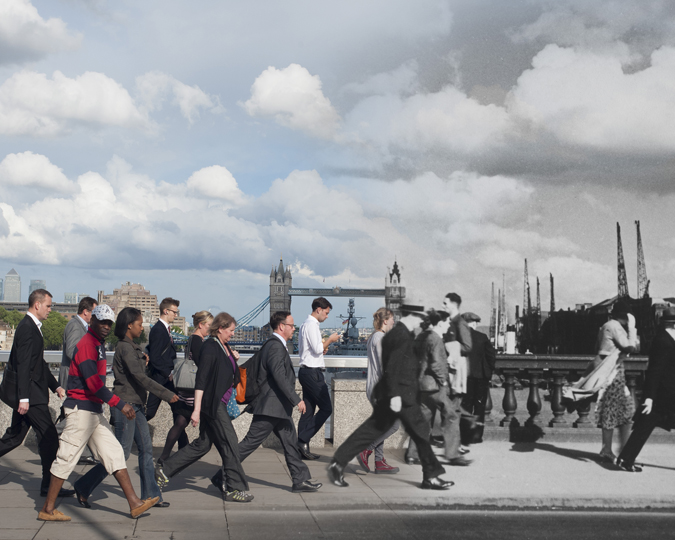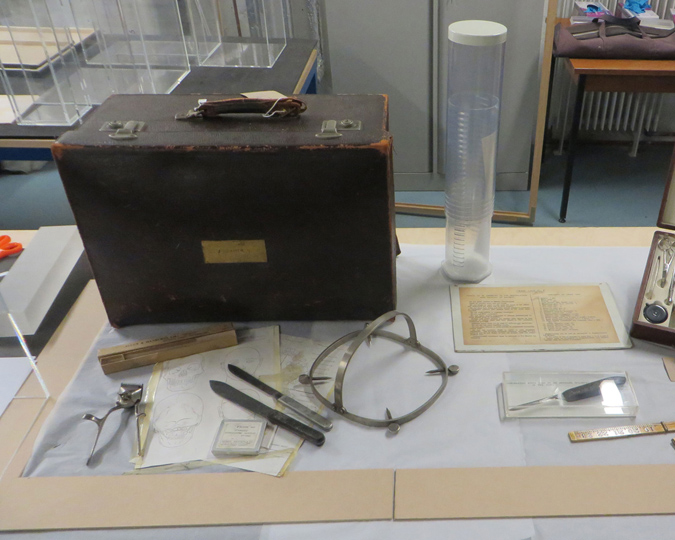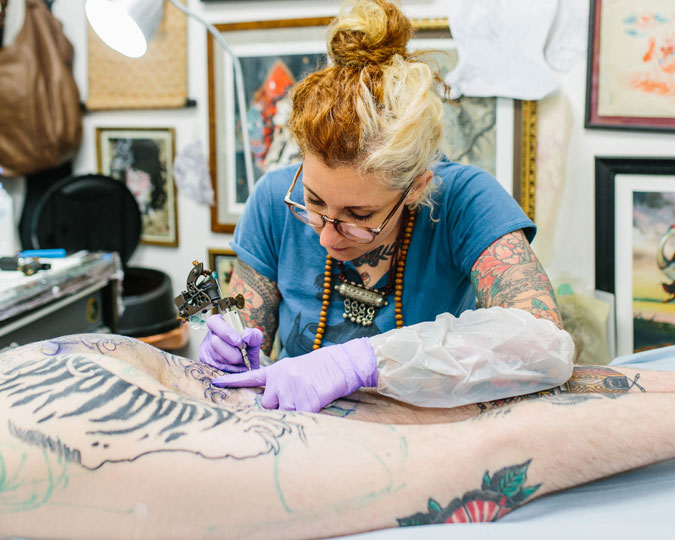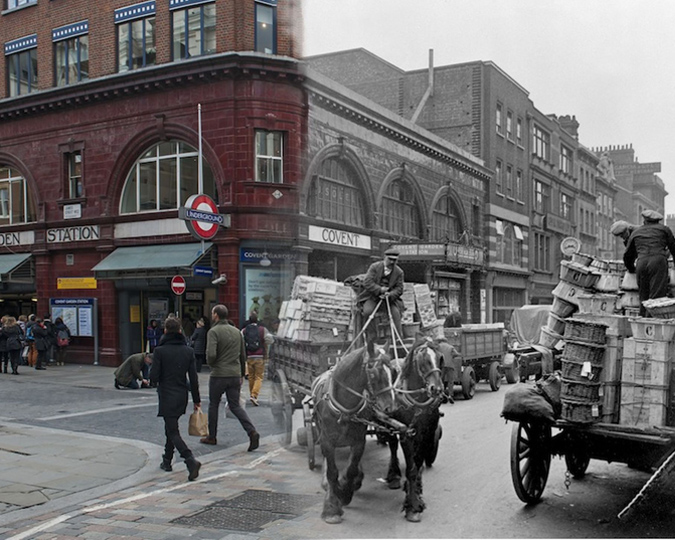In 2015, the museum acquired two works by one of London’s leading photographers, Rut Blees Luxemburg. They’re from her series London Dust, which takes an oblique look at the redevelopment of the City. We asked her some questions about her works and the role London plays in their creation.
At first glance, the photographs are a bit disconcerting. It seems you are looking at a view of London but, sooner or later, something strikes you as odd. The viewpoint is wrong, the skyline makes no sense, and – surely, that building doesn’t exist? One reaction is to assume they’re Photoshopped but Rut’s work isn’t digital. She works with a large-format camera, using 5 x 4 inch sheets of film. There’s no computer trickery involved.
Or rather, there is, but not by Rut. What her photographs show is the computer generated imagery (CGI) used to clad a building site fence. What appear, in Rut’s photographs, to be magnificent vistas are actually CGIs made by property developers to advertise their new buildings. Look closely and you’ll see the gleaming City under the bright blue sky is streaked with grime, and framed by scaffolding bars, sacking and plywood cladding.
This is most obvious in the print Aplomb – St Paul’s (below). The dome of the cathedral is partially obscured by scaffolding and the rivets joining two sections are clearly visible, as are stains on the CG images. On the right is a skyscraper soaring above more familiar City towers, such as the Gherkin. This is the Pinnacle, the building which was being constructed behind the fence. The irony is that what was supposed to be a 64-floor skyscraper rose no higher than 7-storeys before funding problems, brought about by the 2008 financial crisis, brought work to a halt. All of the prints from London Dust feature images from the Pinnacle perimeter fence.
Another, Walkie-Talkie Melted My Golden Calf, alludes to the incident in which sunlight focused by the concave front of the Walkie-Talkie office block damaged cars parked in the street below. It features St Paul’s behind a mysterious molten gold stain flowing across the foreground. In the small exhibition, Rut’s photographs are complemented by her short film London/Winterreise. This takes two journeys into the City at the time of Occupy London, the activist movement which protested against economic inequality. On the first, the camera tracks past the Occupy camp in Finsbury Square, the Bank of England, and corporate building sites. On the second, the Occupy camp has been demolished and the camera drifts along London Wall.
We interviewed Rut Blees Luxemburg at the Shoreditch studio, to learn more about her life and her powerful, sometimes ominous work.
How does London, the city you live and work in, inspire and impact your work?
I made my first body of work around London in the mid-1990s. The work was titled London – A Modern Project and was published as a photobook with text by Michael Bracewell. What compelled me was to look for evidence of modernism in the city, and I found it on the Westway and in the East-end high-rise housing estates. Like the novelist JG Ballard, who I discovered later, I was drawn to these sites as they represented tensions but also potential. There was a dynamic presence in these places: of transformation, possible events and encounters. I used euphoric titles, such as ‘Meet me in Arcadia’ or ‘Vertiginous Exhilaration’ to amplify my sense of this London.
My second attempt to photograph London was in the early 2000s, and my mood had changed to ‘Liebeslied’ – in English this translates as ‘lovesong’ or ‘lovepoem’. Inspired by German poetry I engaged London in a rather more lyrical mode, I was drawn to abandoned, empty spaces in the city, which I termed ‘Das Offene Schauen’ (‘Viewing the Open’) and here I felt Holderlin’s poems resonated. The river to me became a ‘wandering depth’ or an ‘in deeper’. The language I used to name these works was joyfully pulled apart by the philosopher Alexander García Düttmann, who I had asked to write about these London photographs. He challenged my romantic ‘Liebeslied’ with an acerbic ‘My Suicides’ and gave the works the necessary dose of irony any representation of London should always have.
Where did the idea for your London Dust series come from?
London Dust looks at the upheaval at the heart of the City of London, where the forces of rapid architectural transformation currently abound, powered by capital and visualised as shiny CGIs (Computer Generated Images). Architects, designers and developers utilise CGIs to model new buildings; to seduce and promote their version of the luxury future city. Several-metre wide CGI horizons, flaunting luminous blue and golden, unusually rainless London skies, are arranged on temporary walls in the public spaces of the city; their polished and convincing presence oscillating between promise and despair.
The final architectural realisation of these visions is, however, not always fulfilled. London Dust focuses on one of those future buildings: The Pinnacle. Designed with an aspirational flourish, this future apex of London is an alluring image. Projected to be 300 meters tall, it has stopped, at a mere seven storeys: a failed object of an incomplete dream, represented here in its only reality as a stained CGI form on its abandoned building site.
Yet this ruin and its tarnished image gives presence to another form of seduction: the seduction of matter, of base material, manifested by the stains and gritty marks accreted on the image by the everyday urban grind, like dust breeding. London Dust challenges the image as bearer of a cleansed urban future by focussing on the remnants of the real: the dust and dirt, the dense, disorderly and overwhelming material reality of the everyday. Taking as its cue the sociologist Richard Sennett’s argument for the uses of disorder, London Dust observes the complexity of the city in all its material and joyously filthy reality.
London’s architecture and the fabric of the city are recurring subjects in your work. What interests you most about these aspects of the city life?
I am interested in the city, as here the spirit and intents of the time is made manifest. For me the city is akin to literature, it is an archive and also a transformative entity. Goethe, during his experience of Rome demanded: “Speak Stones!”… and they do, but as the city is always incomplete and in transition, this can be akin to a premonition or a presentiment.
Love photography? Subscribe to our photography newsletter to read more stories from our collections and find out about upcoming events and exhibitions.








